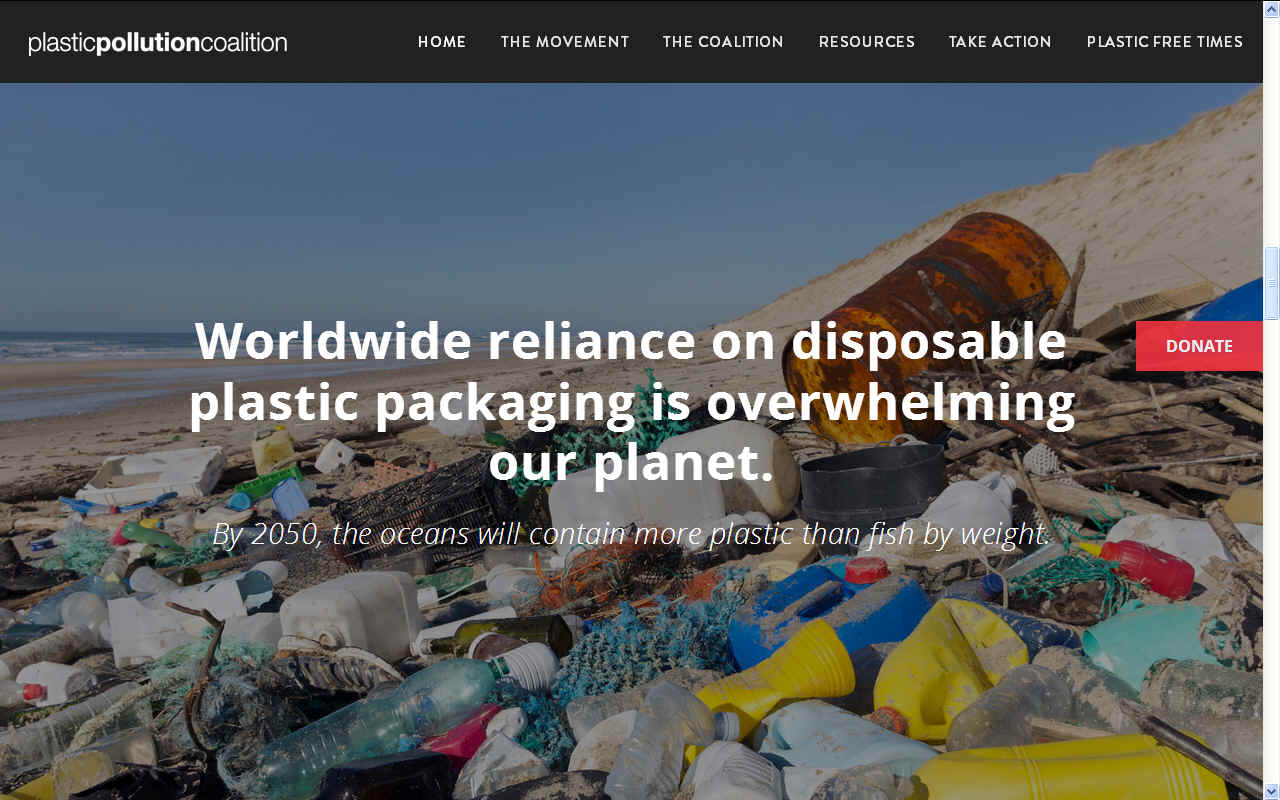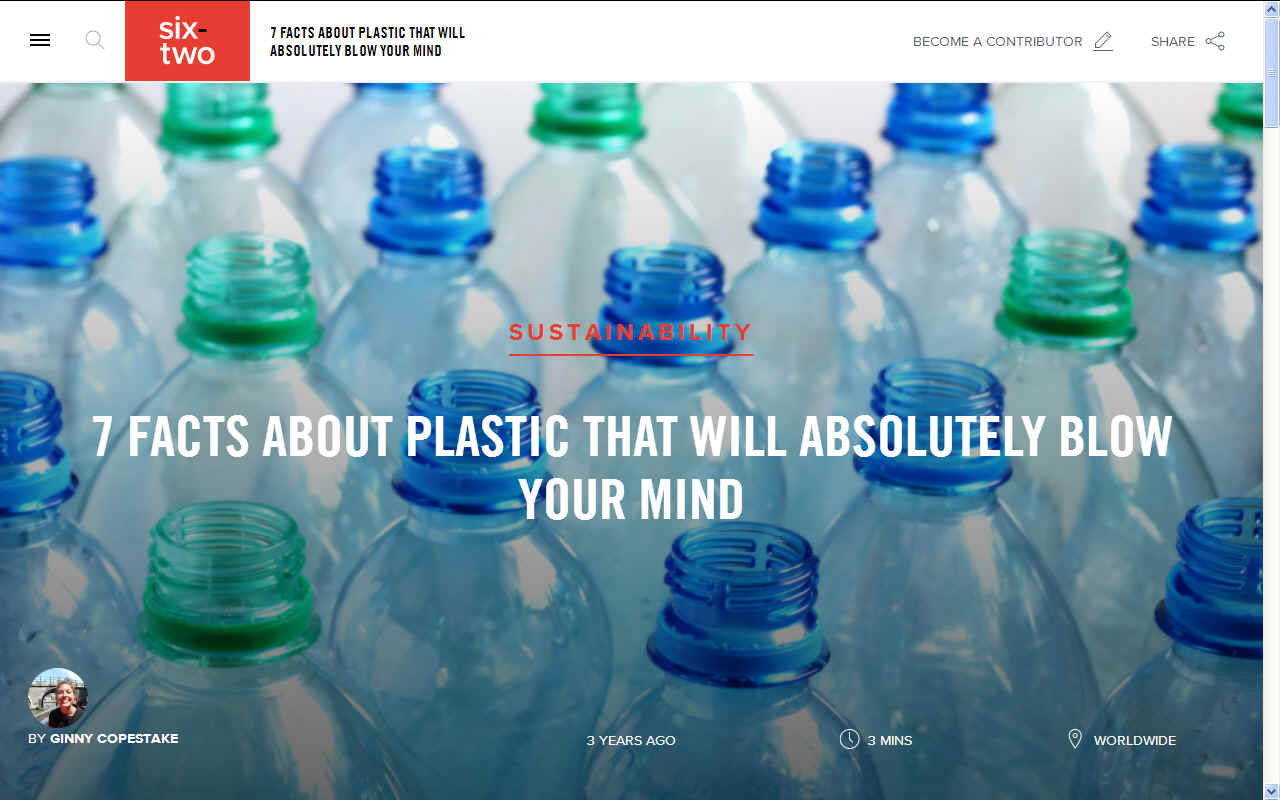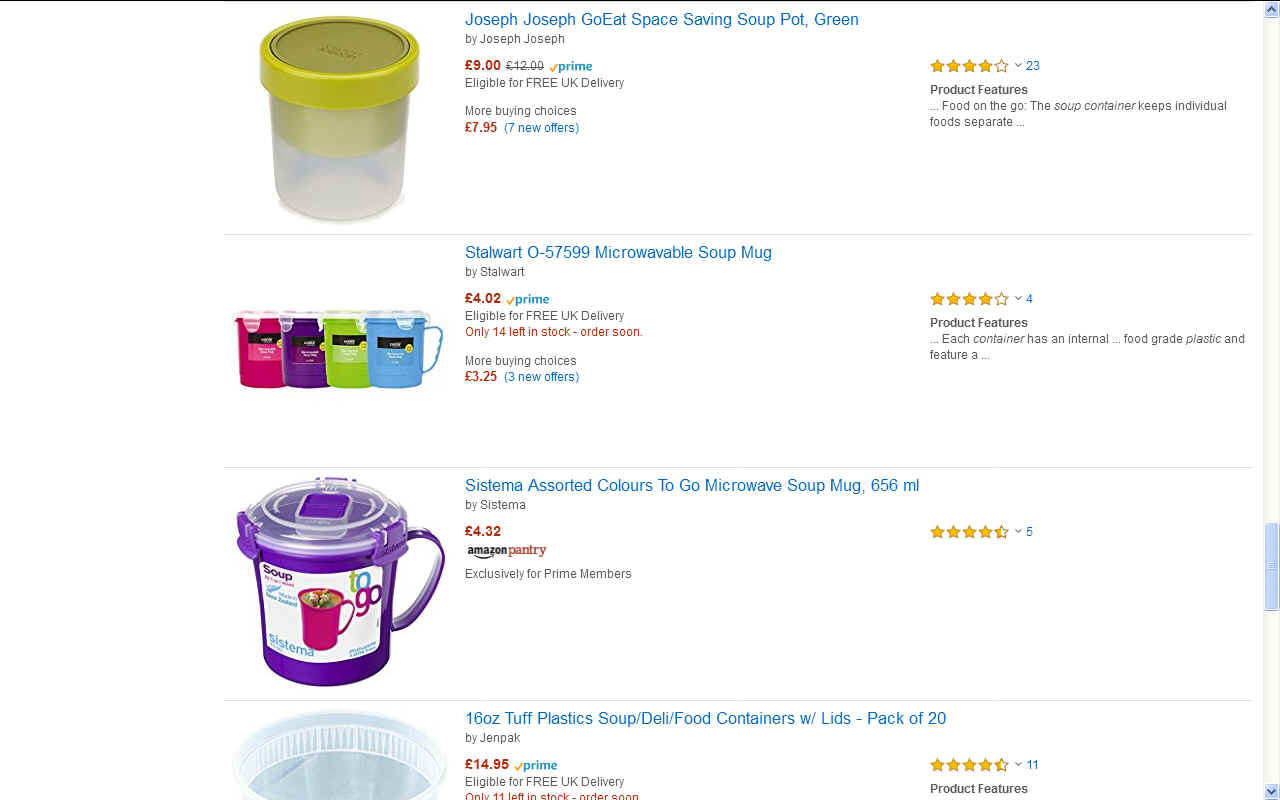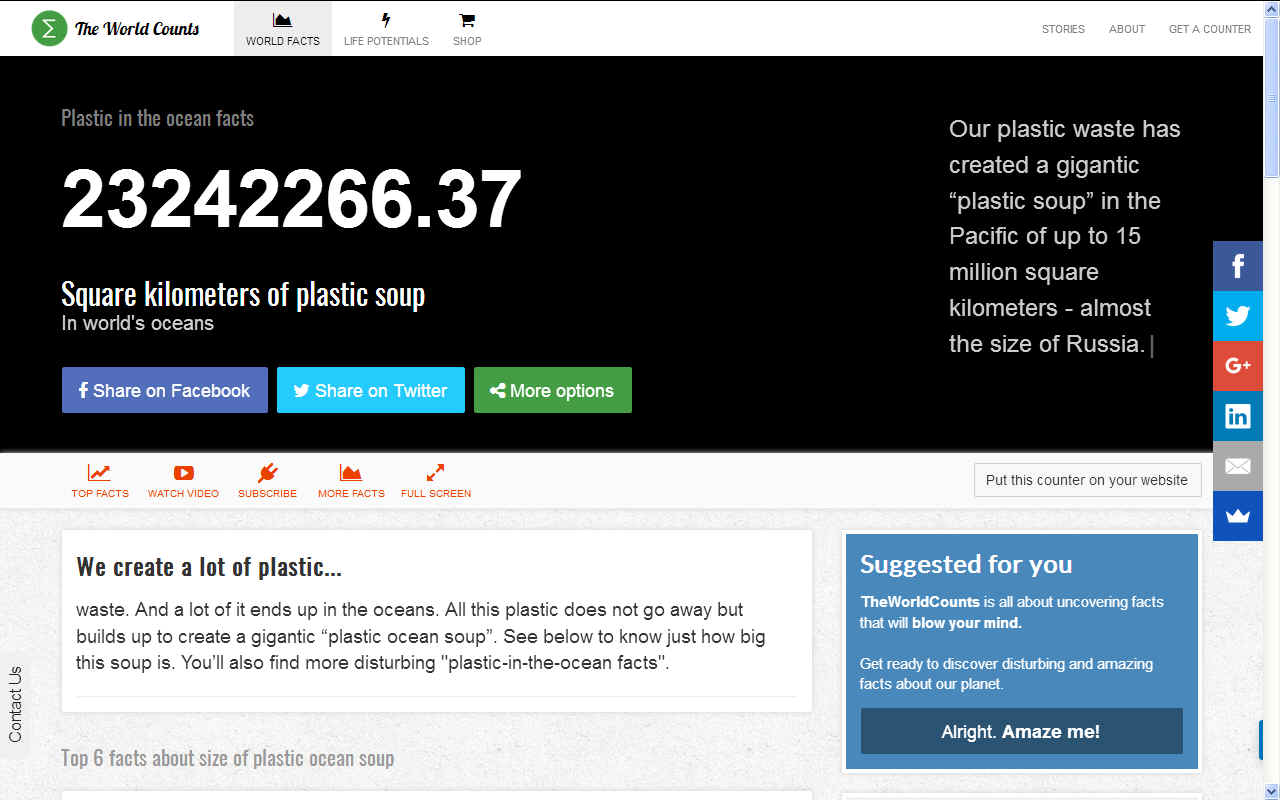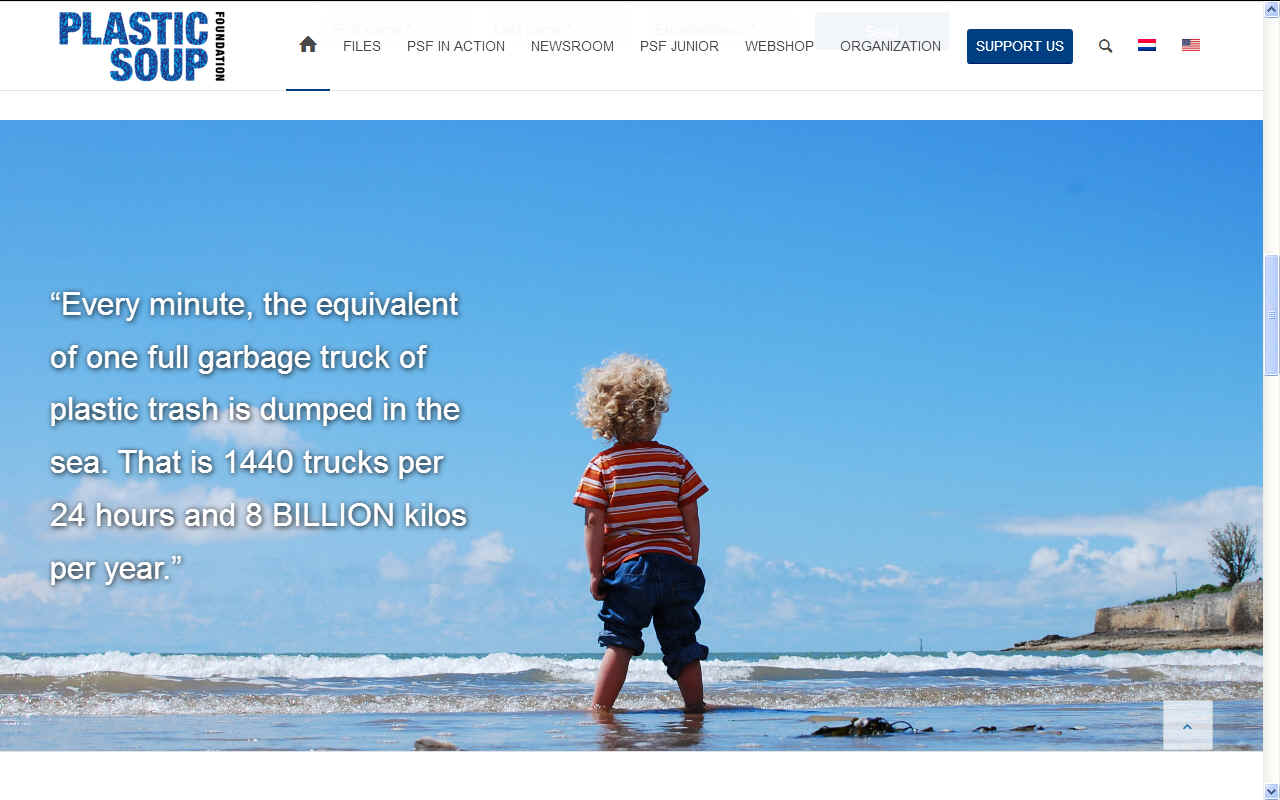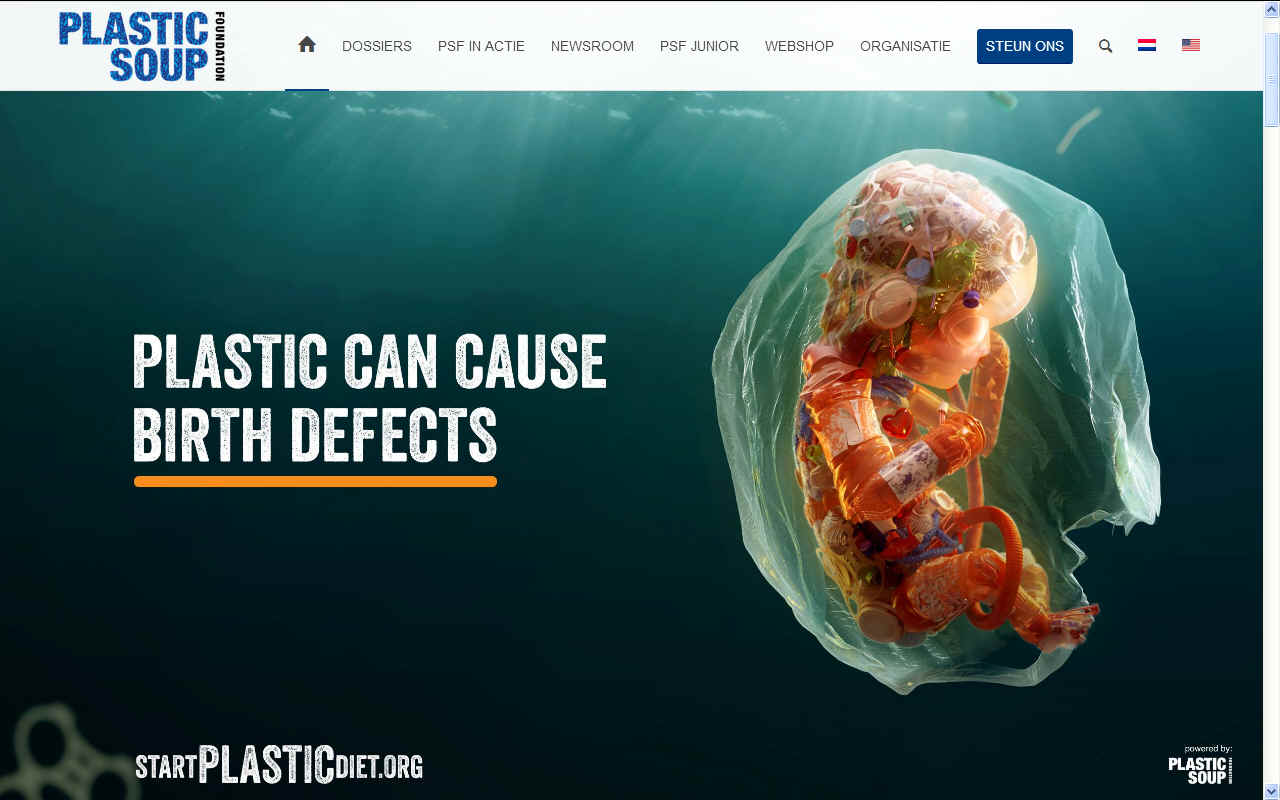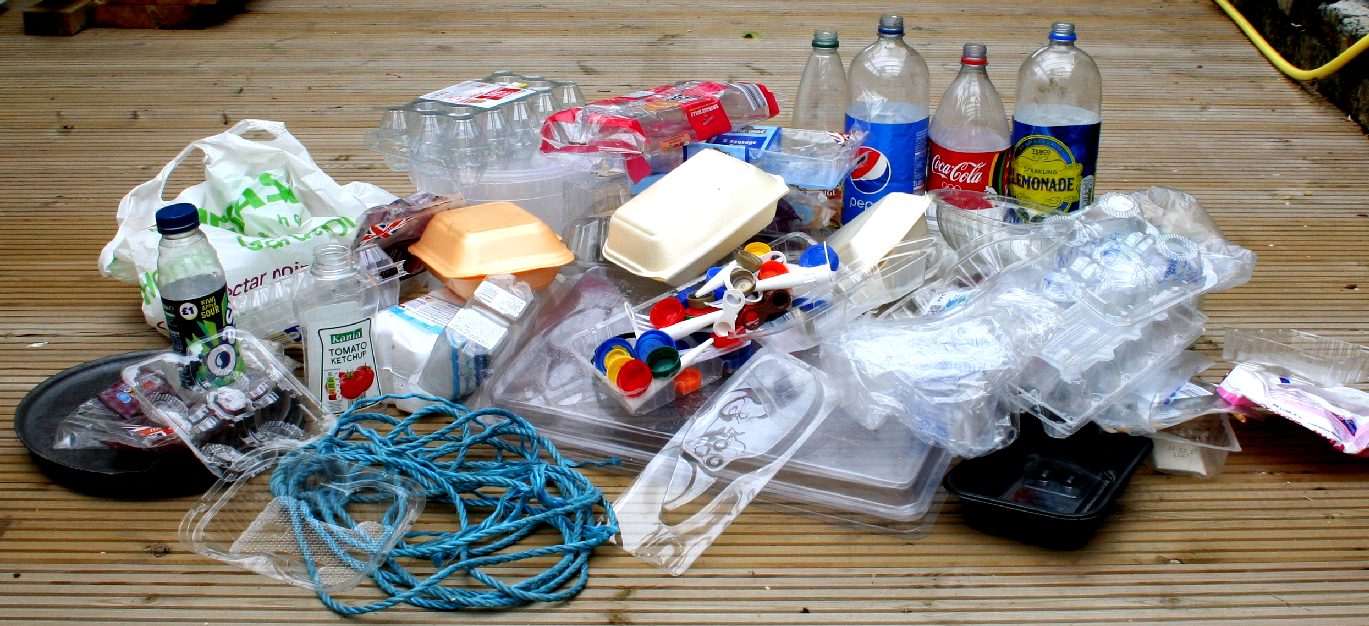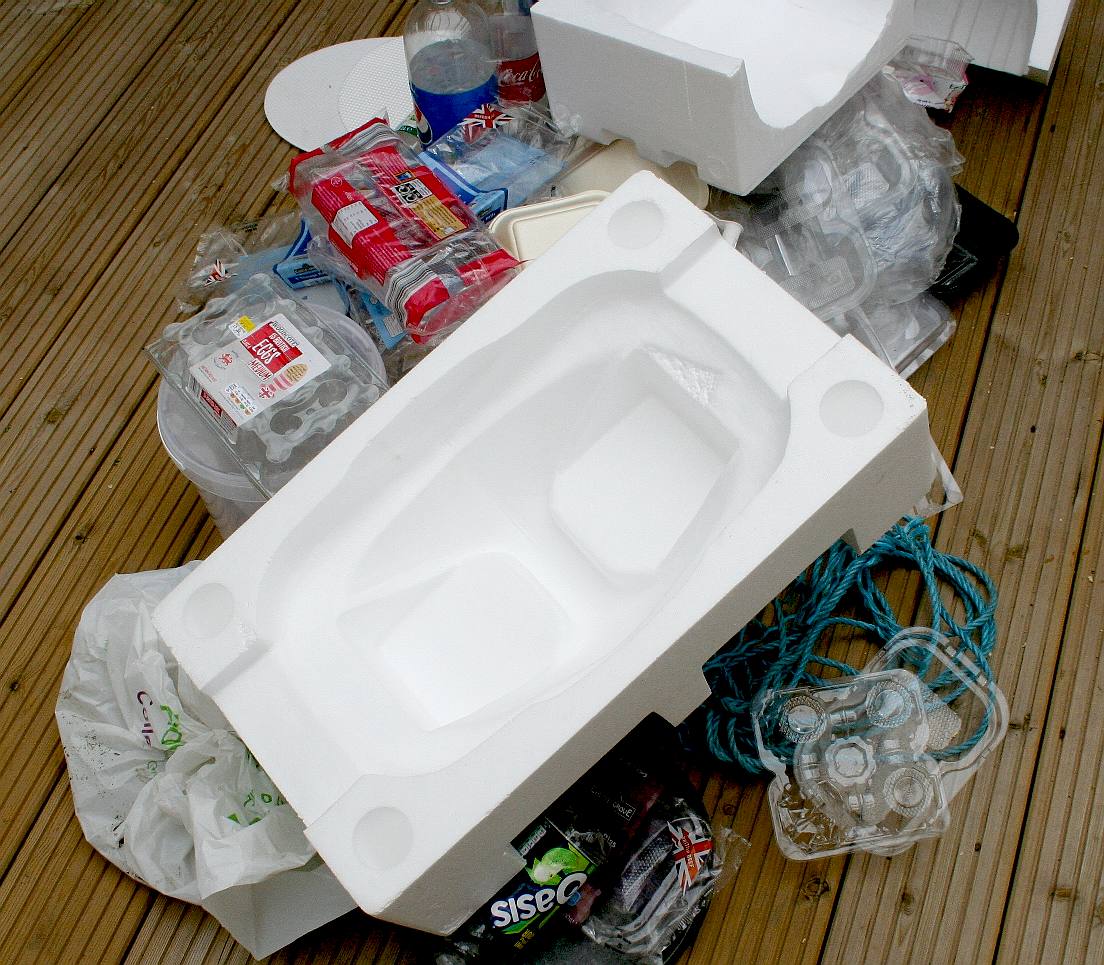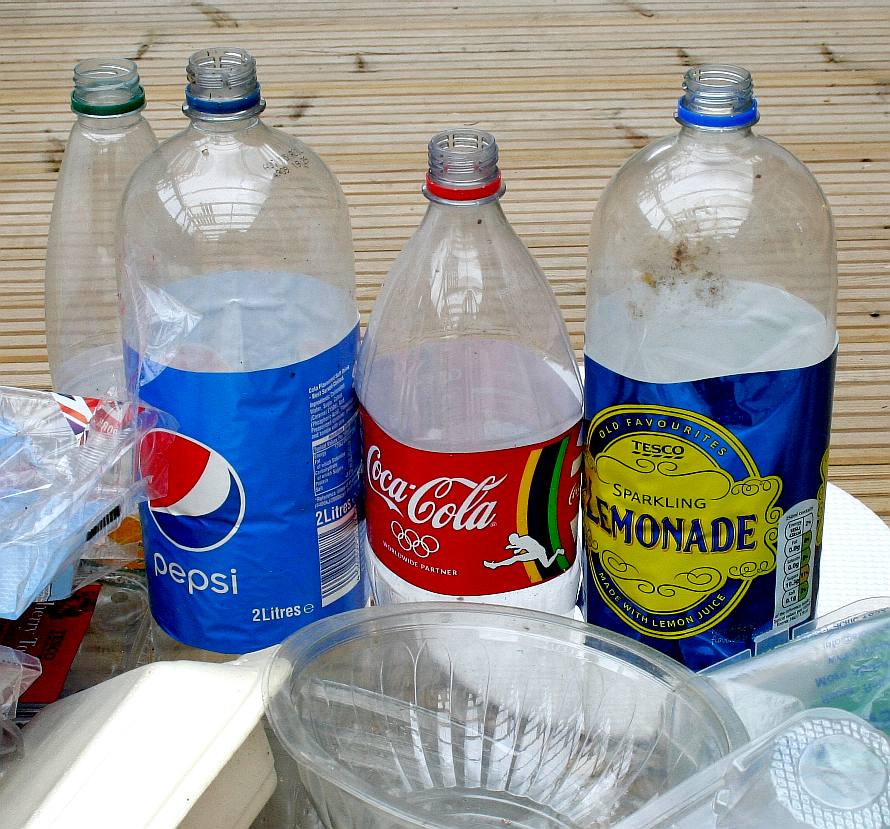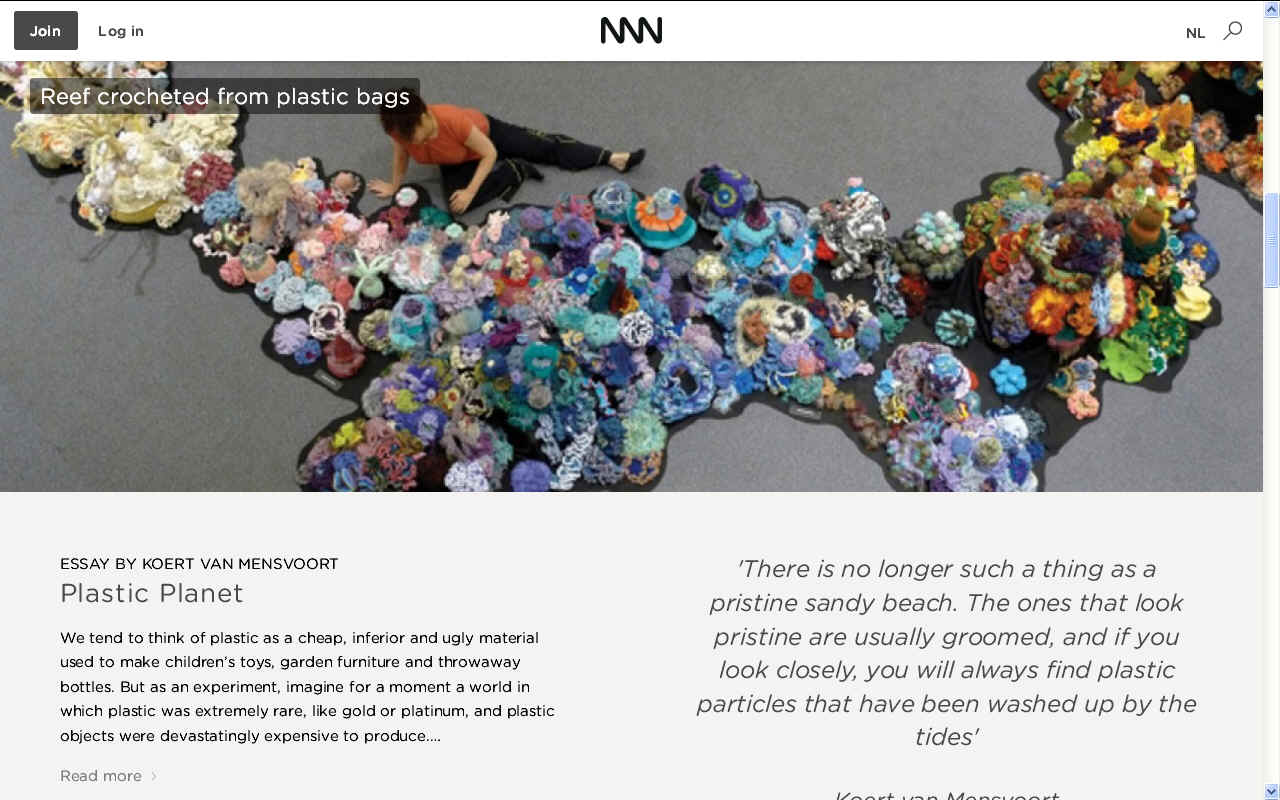|
PLASTIC SOUPS
ABOUT - CONTACTS - DONATE - FOUNDATION - HOME - A-Z INDEX
Around 79% of the plastic waste ever created is still in our environment. We are leaving a legacy of plastic waste on our planet that will take nearly 50 years for our children to put right according to a published estimate. From its invention in 1907, plastic and plastic-derived chemicals have worked their way into the rungs of every food chain on Planet Earth.
WHAT IS PLASTIC SOUP
The plastic soup in our oceans is made up of many different types of plastic like: ABS, polythene, polystyrene, PVC, polypropylene and PET. The particle sizes of these various popular (not for fish or marine mammals) plastics add variety of texture and color to the mix just like any good soup in a restaurant. The plastic is mixed with marine fauna and flora to make it more interest nutrition wise and you will be drinking in these particles and toxins as surely as if mum had made you a bowl of it fresh from the Great Garbage Patch. Yummy!
Marine litter or marine debris is a threat to the ocean that is gaining some attention in recent years, from media, NGOs, business entrepreneurs as well as policy makers.
It is increasingly recognised that the damage to the ocean ecosystems also creates risks to social and economic systems for humans on land. There is an urgent need for a wide range of policies to keep plastic and its value in the economy and out of the ocean. The responses so far are far from what will be required.
The new political focus on the circular economy offers a window of opportunity to encourage:
1. Upstream measures such as product design and multiuse products, 2. Consumer measures such as awareness and pricing to steer purchasing and waste disposal habits, and 3. Downstream measures such as collection and recycling.
PLASTIC
IS ALL AROUND US Plastic is literally everywhere in your home, our shops, offices and factories. If you look around where you are now – we bet you can find at least 1 plastic object in your view. But have you ever really stopped to think of the implications of plastic, or what our "plastic fantastic" lives are doing to the world?
Now imagine the ocean. All you see is waves of water, the glorious sky and basking sunshine. The world is good, but beneath the waves it is not so good. Billions of tiny plastic particles have turned the life giving water that envelope planet earth by 72% into a toxic slurry, instead of the staff of life.
Plastic is all around our sea creatures, the only difference being that they did not ask us to do this to them. Whereas, humans love surrounding themselves with plastic. We use it to brush our teeth. We touch it when typing an email at work or using a smartphone. We carry our groceries home in it. When we open our fridges, cupboards, and bathroom cabinets - there it is – plastic.
PLASTIC FACTS
1. Imagine Russia made of plastic
5.
Every piece of plastic ever produced is still in existence today
7.
Around 8 million tonnes of plastic ends up in the ocean each year
8.
Enough plastic is thrown away every year to circle the earth four times
9.
Around 500 billion plastic bags are produced annually
10. Plastic can be found on every beach in the world.
Microplastics are found at 5,000 metres depth, and plastic bottles have been found at depths of 3,500 metres. It’s actually ‘raining’ plastic in the ocean. Scientists are still far from mapping all the plastic pollution in the oceans.
More and more people are recycling but we still only
reuse 58% of our plastic bottles – that's a 42% gap.
Plastic bottles are accepted for recycling by 99% of local councils in the
UK.
What about councils in Africa and Asia. We only recycle 32% of the plastic pots, tubs and trays we buy.
Is that a good example to developing nations?
One million years from now, geologists exploring our planet’s concrete-coated crust will uncover strange signs of civilisations past. “Look at this,” one will exclaim, cracking open a rock to reveal a thin black disc covered in tiny ridges. “It’s a fossil from the Plasticene age.” Not quite as good as Planet of the Apes, but still the demise of a civilization.
Our addiction to plastics, combined with a reticence to recycle, means the stuff is already leaving its mark on our planet’s geology. Of the 300 million tonnes of plastics produced annually, about a third is chucked away soon after use. Much is buried in landfill where it will probably remain, but a huge amount ends up in the oceans. “All the plastics that have ever been made are already enough to wrap the whole world in plastic film,” palaeobiologist Jan Zalasiewicz of the University of Leicester, UK, recently told a conference in
Berlin,
Germany. It sounds enough to asphyxiate the planet.
CAPTAIN
CHARLES MOORE
GYRES - The Great Pacific Garbage Patch is twice the size of Texas. If you’ve never heard of the Great Pacific Garbage Patch, do a quick Google search – what you’ll find will appall you. Most of the plastic that doesn’t end up in landfill eventually finds its way out to sea, where it then gets picked up by ocean currents, or ‘gyres’. These gyres form giant floating masses, or ocean garbage patches, creating what’s known as ‘plastic soup’. There are 5 of these garbage patches throughout the world, the most famous of which is the Great Pacific Garbage Patch in the North Pacific Ocean.
NON
DEGRADABLE
- “Most plastics don’t biodegrade in any meaningful sense, so the plastic waste humans have generated could be with us for hundreds or even thousands of years,” said co-author Jenna Jambeck. “Our estimates underscore the need to think critically about the materials we use and our waste management practices.”
The swirling pile of trash in the
Pacific Ocean Gyre is growing at an exponential rate. A recent study has estimated that the mass of the garbage island is four to sixteen times bigger than previously thought, and is now three times the size of
France.
LINKS & REFERENCE
Plastic Soup Foundation
http://www.contiki.com/six-two/7-facts-about-plastic-that-will-absolutely-blow-your-mind/ http://www.theworldcounts.com/counters/waste_pollution_facts/plastic_in_the_ocean_facts http://www.plasticpollutioncoalition.org/ https://www.plasticsoupfoundation.org/ http://www.dailymail.co.uk/news/article-5443811/Oceans-turned-toxic-plastic-soup.html https://plasticoceans.org/ http://aplasticplanet.com/
SINGLE USE PLASTICS - This is just a small sample of the plastic packaging that you will find in retails stores all over the world. A good proportion of this packaging - around 8 millions tons a year, will end up in our oceans, in the gut of the fish we eat, in the stomachs of seabirds and in the intestines of whales and other marine mammals. Copyright photograph © 22-7-17 Cleaner Ocean Foundation Ltd, all rights reserved.
ABS - BIOMAGNIFICATION - BP DEEPWATER - CANCER - CARRIER BAGS - CLOTHING - COTTON BUDS - DDT - FISHING NETS FUKUSHIMA - HEAVY METALS - MARINE LITTER - MICROBEADS - MICRO PLASTICS - NYLON - OCEAN GYRES - OCEAN WASTE PACKAGING - PCBS - PET - PLASTIC - PLASTICS - POLYCARBONATE - POLYSTYRENE - POLYPROPYLENE - POLYTHENE - POPS PVC - SHOES - SINGLE USE - SOUP - STRAWS - WATER
This website is provided on a free basis as a public information service. copyright © Cleaner Oceans Foundation Ltd (COFL) (Company No: 4674774) 2018. Solar Studios, BN271RF, United Kingdom. COFL is a charity without share capital.
|
